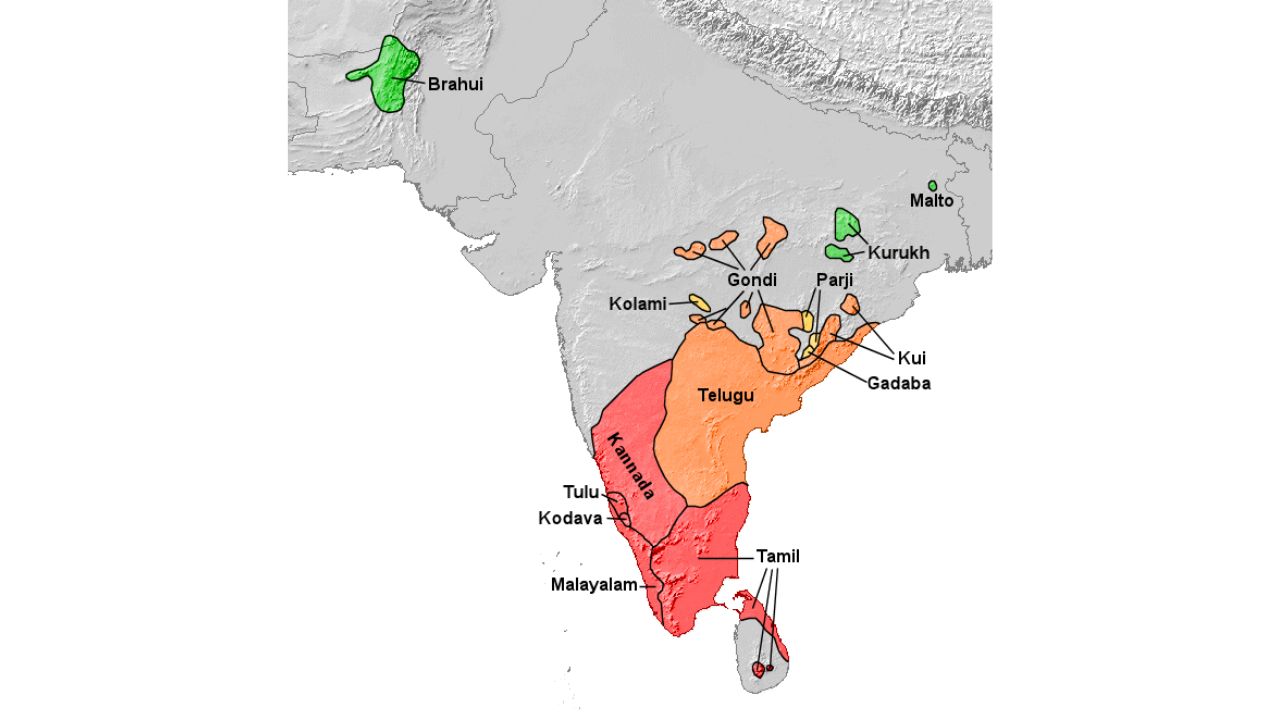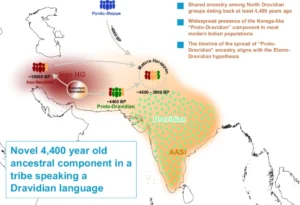The researchers note that the proto-Dravidian ancestry likely arose around the same time as the Indus Valley civilisation, providing evidence that the region between the Iranian plateau and the Indus Valley could have been an early Dravidian cultural and linguistic zone.
Published Oct 27, 2025 | 6:06 PM ⚊ Updated Oct 27, 2025 | 6:06 PM

The Koragas speak a Dravidian language related to the north Dravidian group, which includes Brahui, still spoken in Balochistan — the last surviving example of that linguistic branch.
Synopsis: Karnataka’s Koraga tribe shares proto-Dravidian ancestry tracing back to early populations from the Iranian plateau around 4,400 years ago, roughly the same time as the Indus Valley Civilisation, a new study has found. Published in the European Journal of Human Genetics, it offers new insight into the origins of Dravidian-speaking peoples and suggests an ancient cultural and linguistic zone stretching between the Iranian plateau and the Indus Valley.
A team of geneticists studying the Koraga tribe has identified a previously unknown ancestral source in the Indian gene pool, tracing it to early Dravidian-speaking populations from the Iranian plateau around 4,400 years ago.
The findings, first reported by The Telegraph and published in the European Journal of Human Genetics, add a sixth ancestral lineage to the previously known five major genetic lineages: South Asian hunter-gatherers, Neolithic Iranian farmers, Caspian steppe pastoralists, and Tibeto-Burman and Austroasiatic groups.
The study, carried out by scientists from Yenepoya University and Mangalore University, in collaboration with the University of Bern in Switzerland, estimates that this newly identified ancestry forms around 20 percent of the modern Indian genome.
The researchers note that the proto-Dravidian ancestry likely arose around the same time as the Indus Valley civilisation, providing evidence that the region between the Iranian plateau and the Indus Valley could have been an early Dravidian cultural and linguistic zone.

Genetic research over the last two decades has shown that nearly all Indians descend from a complex mixture of ancestral populations that entered the subcontinent at different times.
The Koragas are a small tribal community native to coastal Karnataka and northern Kerala. Researchers found that the tribe carries a distinct proto-Dravidian genetic signature, which was later detected in other Indian populations as well.
“The Koragas were the key to this discovery — we found the proto-Dravidian ancestral component in them first,” said Ranajit Das, population geneticist and associate professor at Yenepoya University, Mangalore, speaking to The Telegraph.
“But subsequent analyses show that it is present in other Indian populations as well.”
The Koragas, among the oldest tribal communities in Udupi and Dakshina Kannada districts of Karnataka and Kasargod in Kerala, are listed as a Particularly Vulnerable Tribal Group. Traditionally known for basket-weaving and drum-beating, the community has maintained a degree of isolation through centuries of endogamy.
Genetic research over the last two decades has shown that nearly all Indians descend from a complex mixture of ancestral populations that entered the subcontinent at different times.
The earliest inhabitants were South Asian hunter-gatherers, descendants of humans who migrated out of Africa some 60,000 to 70,000 years ago.
Later came Neolithic farmers from the Iranian plateau between 8,000 and 6,000 years ago, followed by Caspian steppe pastoralists who arrived from the northwest about 3,000 to 4,000 years ago. Additional influences came from Tibeto-Burman and Austroasiatic populations migrating from the northeast and southeast respectively.
The researchers note that the proto-Dravidian ancestry likely arose around the same time as the Indus Valley civilisation, providing evidence that the region between the Iranian plateau and the Indus Valley could have been an early Dravidian cultural and linguistic zone.
The Koragas speak a Dravidian language related to the north Dravidian group, which includes Brahui, still spoken in Balochistan — the last surviving example of that linguistic branch.
